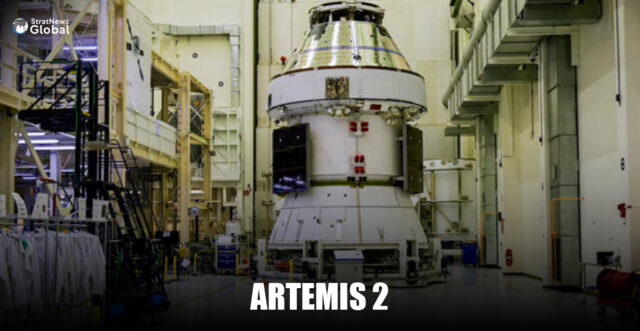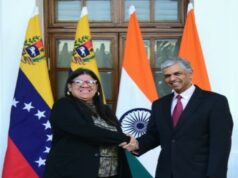NASA’s first crewed mission under its Artemis programme — a journey around the Moon and back — is on track for an April launch, with officials saying on Tuesday that the timeline could potentially be advanced to February.
The space agency’s Artemis programme is the flagship US effort to return humans to the Moon, a multibillion-dollar series of missions that rivals a similar effort by China, which is aiming for a 2030 astronaut Moon landing.
Artemis 2, a 10-day flight in which a crew of four astronauts will fly around the Moon and back, is a precursor test to the agency’s first astronaut Moon landing since 1972.
That mission, Artemis 3, is a far more ambitious and complex endeavor currently planned for 2027 and involving a Moon lander variant of SpaceX’s Starship rocket.
‘Intend To Keep Commitment’
Artemis 2 involves NASA’s Space Launch System rocket, built by Boeing and Northrop Grumman, and its Orion capsule, built by Lockheed Martin. Last year, NASA delayed the mission by several months to April 2026.
“We intend to keep that commitment,” Lakiesha Hawkins, an acting senior official in NASA’s exploration unit, said during a news conference on Tuesday of the 2026 date.
She added that the readiness of NASA’s SLS and Orion spacecraft could potentially warrant an earlier launch date, but that safety considerations will ultimately guide when the mission launches.
The Orion capsule will ride atop the giant, 322-foot-tall (98 meters) SLS rocket from NASA’s Kennedy Space Center in Florida, the first time the spacecraft duo will fly with humans.
Who Are The Crew?
Artemis 2 will fly astronauts Reid Wiseman, the mission’s commander who last flew on a Russian Soyuz rocket to the International Space Station in 2014; Victor Glover, the pilot who flew to space in 2020 on a SpaceX ISS mission; Christina Koch, a mission specialist who flew on a Soyuz ISS mission in 2019; and Canadian astronaut Jeremy Hansen, another mission specialist who will fly to space for the first time.
Hansen’s inclusion will mark the first Canadian to fly in the vicinity of the Moon.
(With inputs from Reuters)





